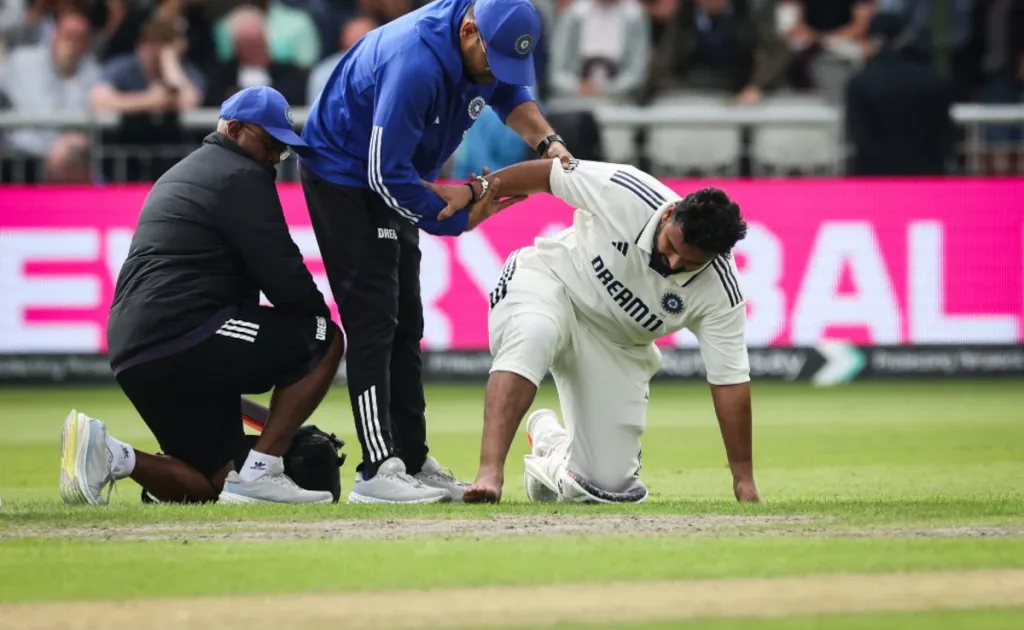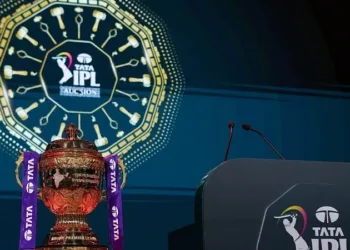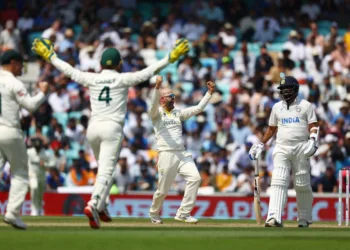The ICC is reportedly close to approving like-for-like replacements for external injuries, a rule change sparked by Rishabh Pant’s fractured toe incident during the IND vs ENG 4th Test at Old Trafford.
Cricket is about to get more humane. After watching Rishabh Pant battle through a fractured toe to score a gutsy fifty at Old Trafford, the International Cricket Council (ICC) is finally ready to change outdated injury replacement rules that have frustrated players and fans for decades.
Table of Contents
The Catalyst: Pant’s Painful Heroics
The dramatic scenes at Old Trafford on Day 2 of the 4th Test will be remembered as a turning point. Pant, hobbling on one foot after suffering a fractured toe while attempting a reverse sweep off Chris Woakes, returned to bat in a do-or-die situation for India. His gritty fifty earned a standing ovation, but it also highlighted the cruel reality of current ICC regulations.
Under existing rules, substitute players can only field—they cannot bat or bowl even when the original player is clearly unfit to continue. This forced Pant into an impossible choice: abandon his team or risk further injury.
Current vs Proposed Rules Breakdown
| Aspect | Current ICC Rules | Proposed Changes |
|---|---|---|
| Substitute Role | Field only | Can bat, bowl, and field |
| Injury Type | Only concussion replacements allowed | External injuries included |
| Approval Process | Umpire approval for fielding | Cricket committee ratification |
| Player Status | Original player cannot return | Like-for-like replacement system |
| Implementation | Immediate (existing) | Next ICC committee meeting |
The Domino Effect
This isn’t Pant’s first injury drama this series. During the 3rd Test at Lord’s, he was hit on his finger while attempting to save a boundary off Jasprit Bumrah’s bowling. Dhruv Jurel stepped in as wicketkeeper but couldn’t contribute with the bat due to the archaic rules—a situation that could have changed the match outcome.
Cricket injury management has evolved significantly in recent years, but the rules haven’t kept pace with modern understanding of player welfare and match integrity.

ICC Sources Confirm Change is Coming
According to a Times of India report, an ICC source revealed: “There is a chance that teams will get to bring in a replacement for serious external injuries. The matter is already under deliberation. A ratification is expected in the next ICC cricket committee meeting.”
This development represents a significant shift in cricket’s approach to player welfare, bringing it in line with other major sports that prioritize athlete safety without compromising competitive integrity.
Why This Matters Beyond Cricket
The proposed changes reflect cricket’s evolution from a gentleman’s game bound by tradition to a modern sport that values player welfare. It’s about creating fair competition where teams aren’t penalized for injuries sustained during normal play.
For sports medicine professionals, this represents a victory for evidence-based approaches to injury management. Players won’t be forced into playing through serious injuries that could cause long-term damage.
Global Impact on Cricket Strategy
Teams will now need to reconsider squad composition and match strategies. Having like-for-like replacements available could influence tactical decisions, especially in longer formats where injuries are more likely to occur over multiple days.
The change could also impact how players approach risky shots and fielding positions, knowing that injury won’t necessarily doom their team’s chances.
What Happens Next
The ICC Cricket Committee’s next meeting will be crucial for ratifying these changes. Once approved, the new rules could be implemented across all formats, fundamentally changing how cricket handles injuries during matches.
For players like Pant, who’ve shown incredible courage playing through pain, this represents vindication that player welfare and competitive fairness can coexist.
The days of watching cricketers hobble through innings on one leg may finally be coming to an end. As cricket continues its journey toward becoming a truly global sport, prioritizing player welfare isn’t just good governance—it’s essential for the game’s future.
Follow the latest developments in cricket rules and player welfare on TechnoSports’ cricket coverage.
Read more: Tilak Varma’s County Masterclass: Second Century in Four Innings Puts Test Cap Within Reach








